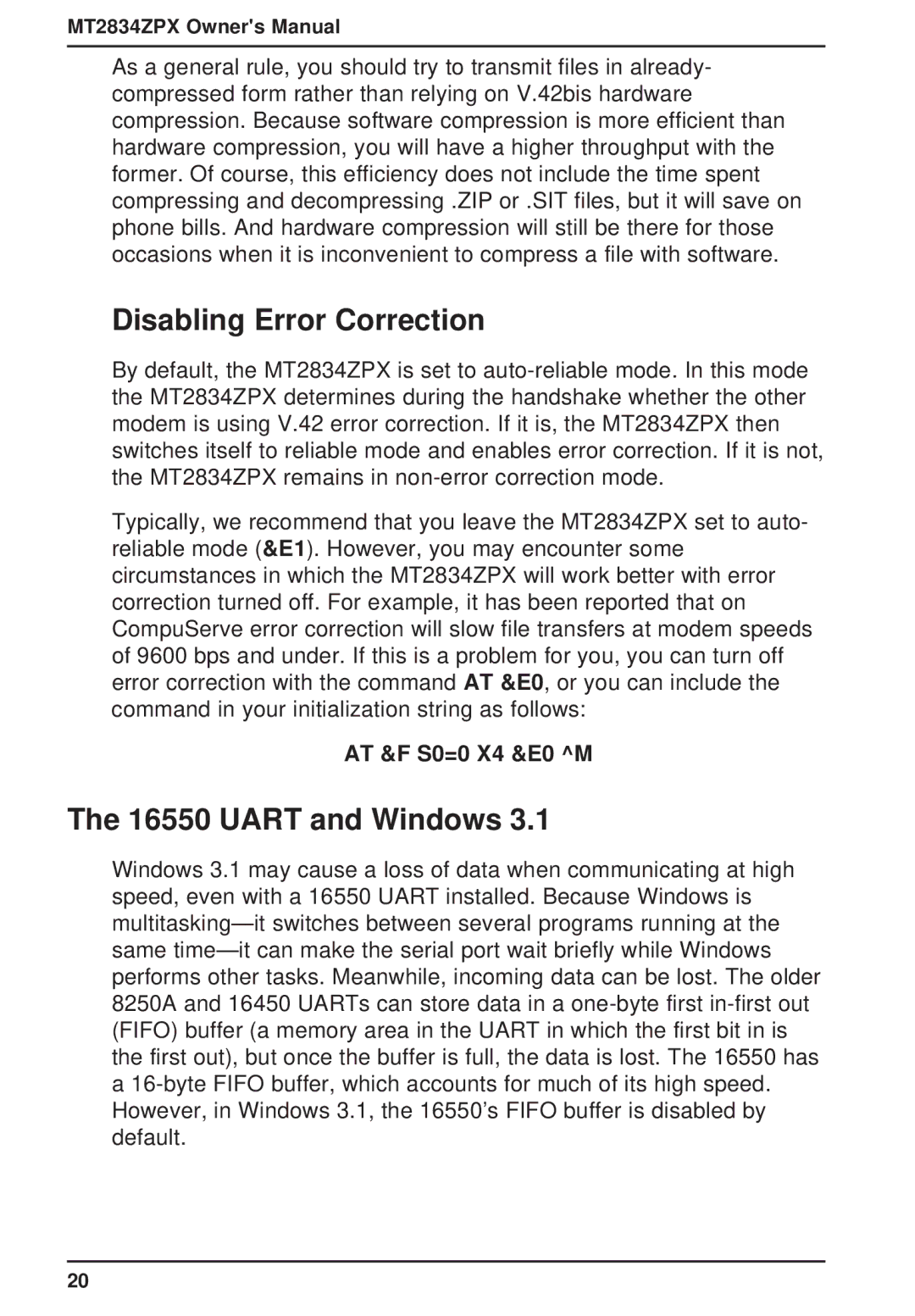
MT2834ZPX Owner's Manual
As a general rule, you should try to transmit files in already- compressed form rather than relying on V.42bis hardware compression. Because software compression is more efficient than hardware compression, you will have a higher throughput with the former. Of course, this efficiency does not include the time spent compressing and decompressing .ZIP or .SIT files, but it will save on phone bills. And hardware compression will still be there for those occasions when it is inconvenient to compress a file with software.
Disabling Error Correction
By default, the MT2834ZPX is set to
Typically, we recommend that you leave the MT2834ZPX set to auto- reliable mode (&E1). However, you may encounter some circumstances in which the MT2834ZPX will work better with error correction turned off. For example, it has been reported that on CompuServe error correction will slow file transfers at modem speeds of 9600 bps and under. If this is a problem for you, you can turn off error correction with the command AT &E0, or you can include the command in your initialization string as follows:
AT &F S0=0 X4 &E0 ^M
The 16550 UART and Windows 3.1
Windows 3.1 may cause a loss of data when communicating at high speed, even with a 16550 UART installed. Because Windows is
20
